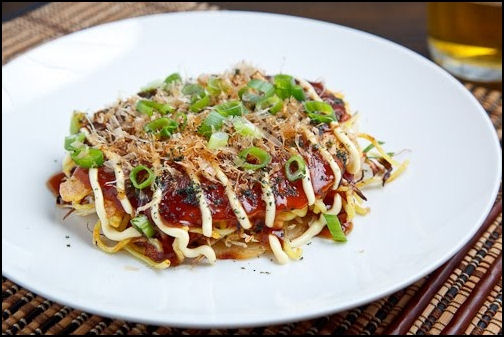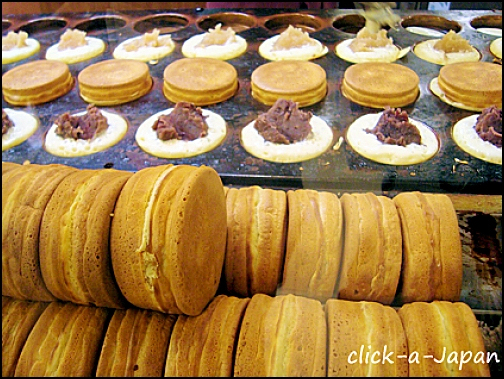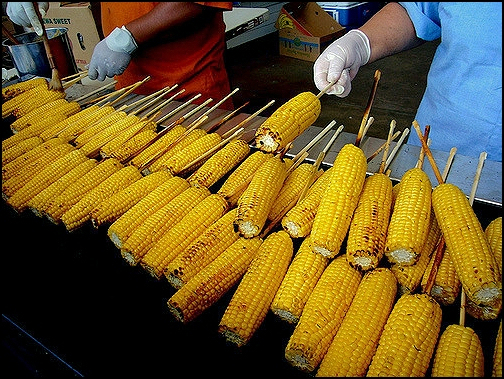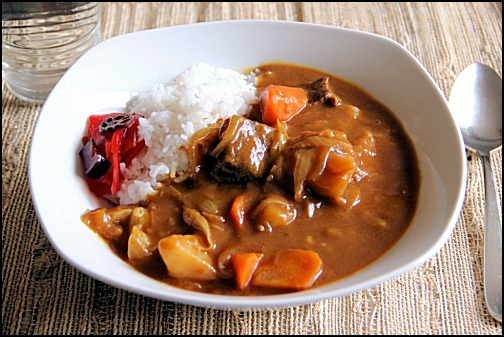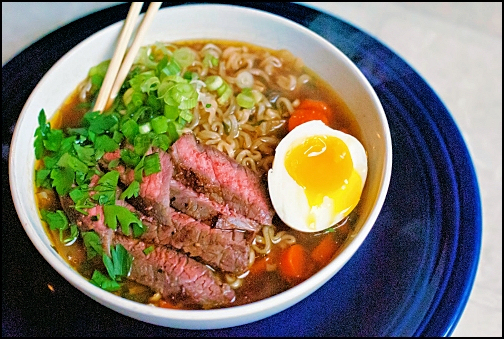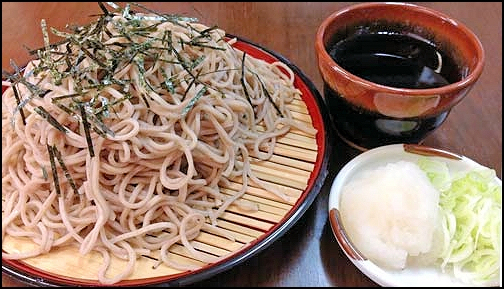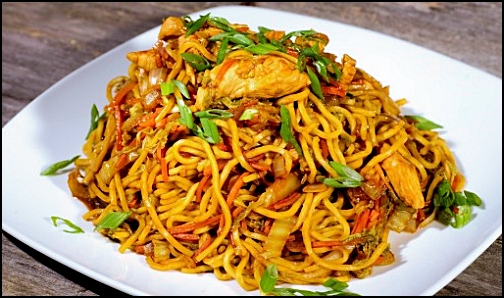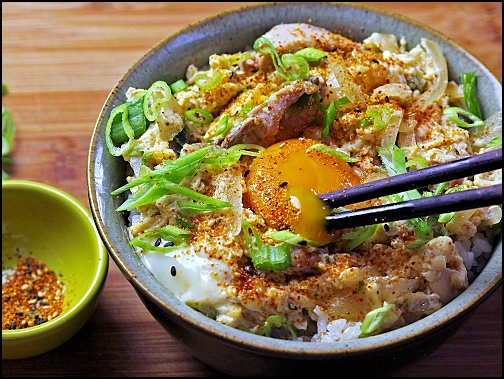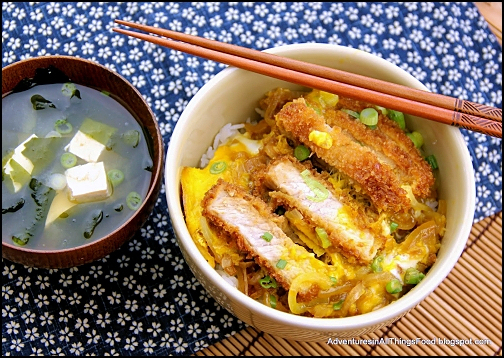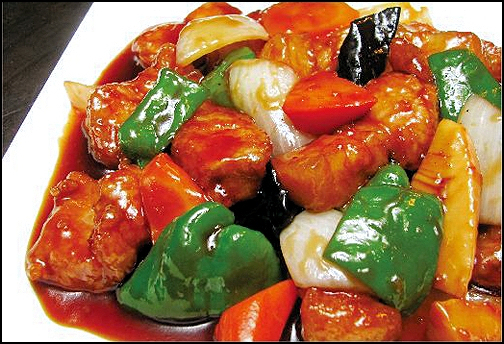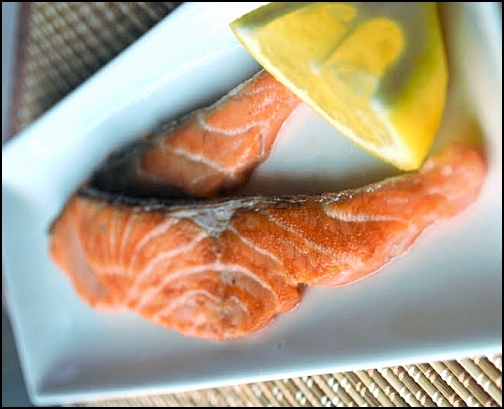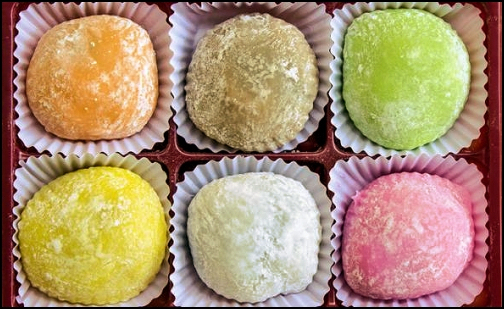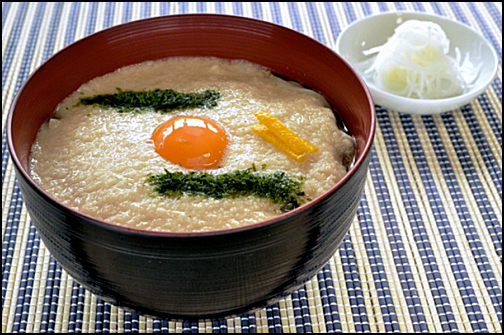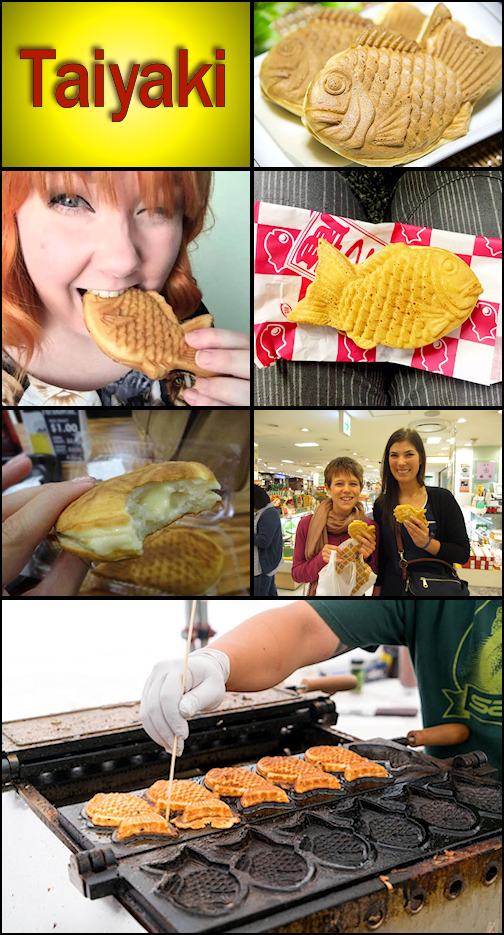|
Imagawayaki - is a Japanese dessert made with batter cooked in a special pan with a circular shape. It's traditionally filled with red bean paste but in recent years ingredients such as custard, fruit jams, meat, potatoes and curry are also common.
Oyakodon (Oyako Donburi) - literally "parent-and-child donburi", is a donburi, or Japanese rice bowl dish, in which chicken, egg, sliced scallion, and other ingredients are all simmered together in a sauce and then served on top of a large bowl of rice.
Katsudon (Katsu Donburi) - is a popular Japanese food, a bowl of rice topped with a deep-fried pork cutlet, egg, vegetables, and condiments. The dish takes its name from the Japanese words tonkatsu (for pork cutlet) and donburi (for rice bowl dish). It has become a modern ritual tradition for Japanese students to eat katsudon the night before taking a major test or school entrance exam. This is because "katsu" is a homophone of the verb katsu, meaning "to win" or "to be victorious". It is also a famous gag of Japanese police films: many people think that suspects will speak the truth with tears when they have eaten katsudon and are asked, "Did you ever think about how your mother feels about this?" Even nowadays, the gag of "We must eat katsudon while interrogating" is popular in Japanese films.
Subuta (Vinegar Pork) - The Japanese version of a Sweet & Sour Pork Chinese dish which tastes a little different than what we are used to in the US.
Shiozake - Highly salted dry salmon. A little goes a long way.
Mochi - a Japanese rice cake made out of special glutinous rice pounded into a paste and molded into a shape. During the mochitsuki event in Japan, otherwise known as the mochi pounding ceremony, mochi is made. In Japan, it is a traditional food mainly eaten during the Japanese New Year, although it is served throughout the year. Mochi can be made savory and sweet. The sweet version is known as Daifuku, which are round glutinous rice balls filled with sweet ingredients such as red bean or white bean paste.
Tororo Imo - You most probably want to pass this one up. I love it, but chances are you won't. Besides it rarely appears on restaurant menus and most Japanese families prepare it at home so it would be difficult for you to find in a restaurant. It is made from a naraimo potato (aka: Chinese yam, Chinese potato, cinnamon-vine, a few other names - Dioscorea polystachya) which is a unique tuber that grows three feet under ground and can be eaten raw. The potato can be grated, have some seaweed, wasabi & soy sauce added and topped with a raw egg to quickly create the Tororo Imo dish. It's not that you won't like the taste, but you probably have never eaten a food of this consistency before.
Taiyaki - A most enjoyable and highly popular street food which can best be described as a pocketed waffle in a fish shape with a multitude of fillings such as custard, chocolate (like Nutella), sweet red bean paste, ice cream, cheese, etc. - endless variations. It is made via special heated mass molds similar to waffle irons with the stuffing added just before the top and bottom of the molds are joined. They are similar to the Imagawayaki, mentioned earlier, but the pastry portion is more waffle-like and crispier. Some street vendors are even placing other food products in the interior pocket such as meat, fish, and vegetables expanding the taiyaki choices. My two favorites are the custard and chocolate. But since, after buying one, as they are quite inexpensive, you are bound to pass another shop further down the street and you will be ready to experiment with another flavor. "Bet you can't eat just one!"
Photos and descriptions from various websites See all of Gary Hayman's Web Sites at: http://ghayman.net
|


